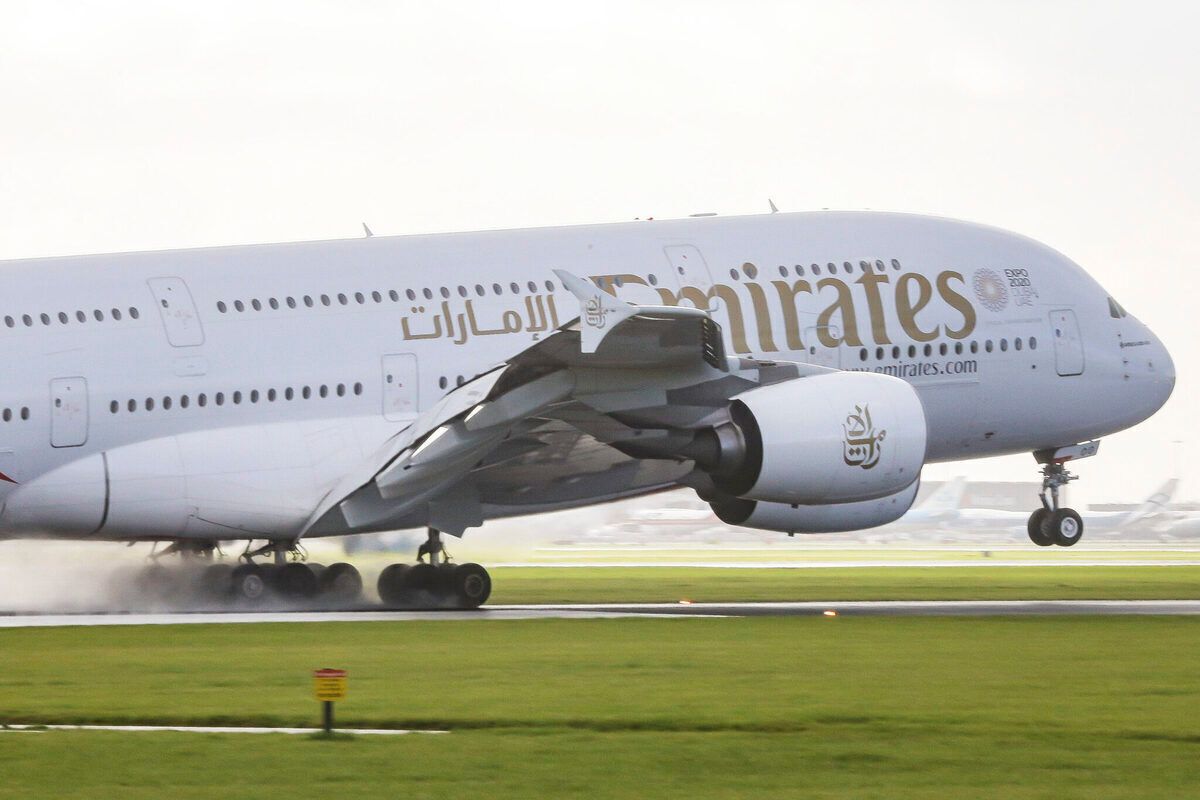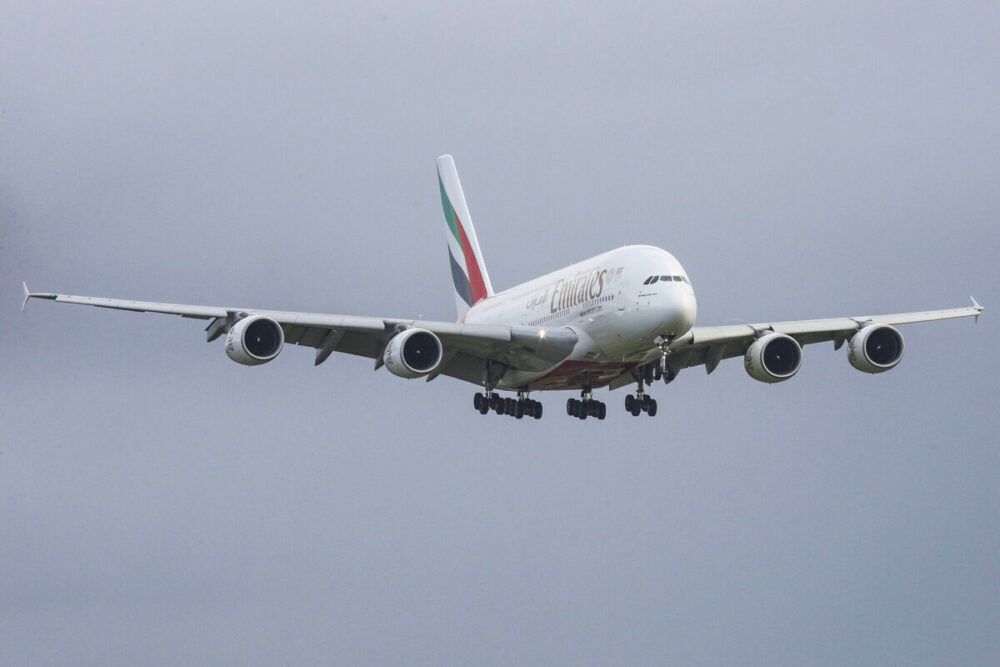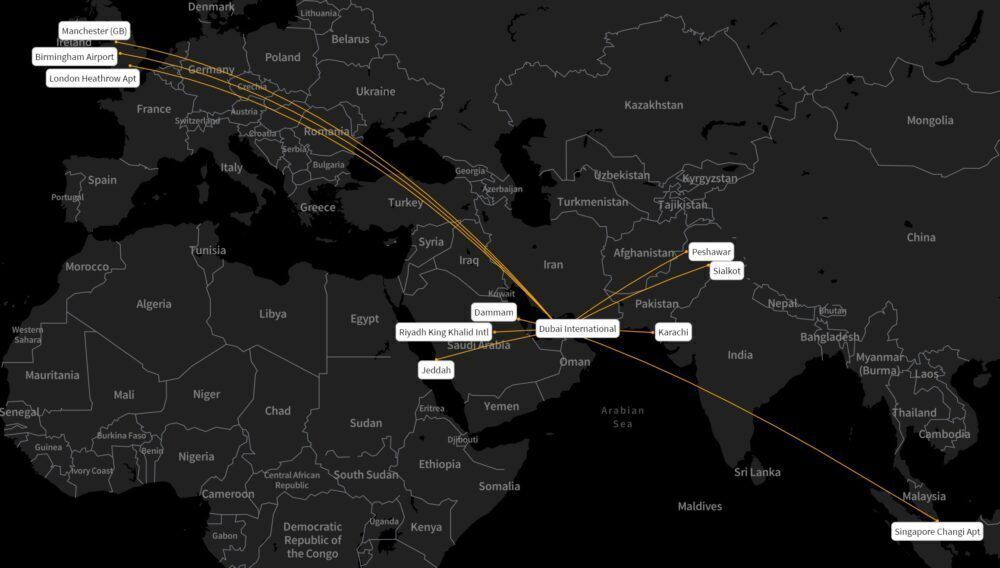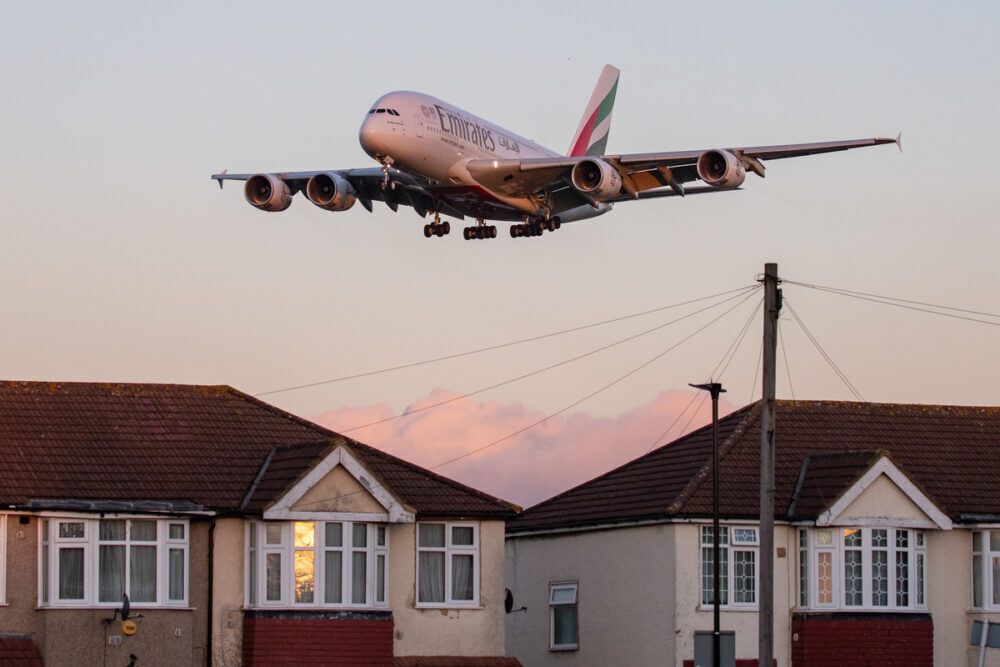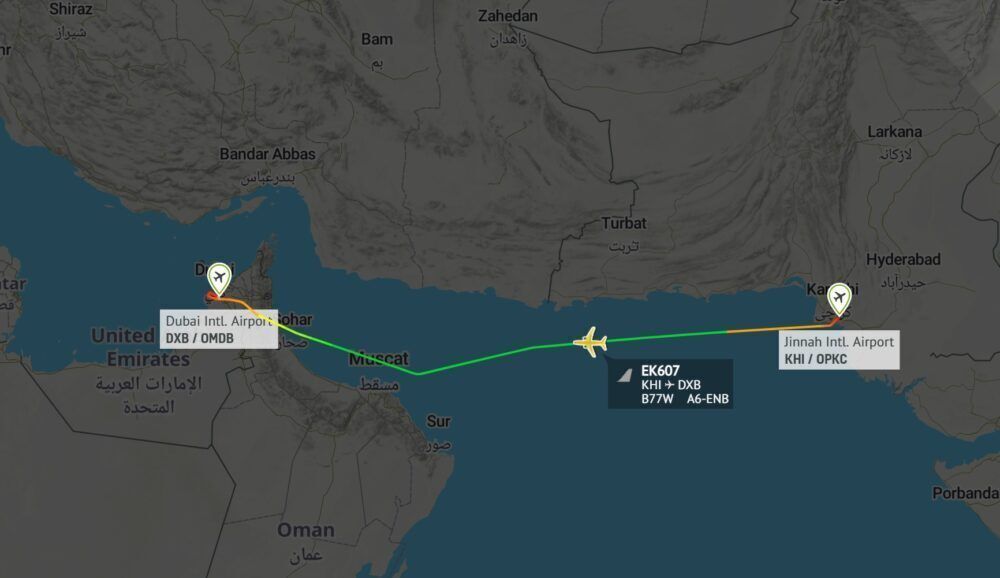This week, Emirates has cut 150,000 seats from its July schedule, with the UK, Pakistan, and Saudi Arabia badly affected – and potentially more to come. But that’s only part of the story. A handful of routes elsewhere have seen seats added. We examine what’s happening.
While Emirates has slashed 150,000 July seats, based on data submitted by the carrier to OAG, it should be noted that some 28,000 have been added to particular routes. This means that the net decline is 122,000 this week, down by 3.8% over what it had planned last week.
The fact that capacity was removed so late in the day shows how to-the-wire airlines are responding to new developments regarding country restrictions and changing demand. And they must. Indeed, AirAsia has said how it can ramp up capacity as required – and the reverse is true too.
What routes have seen the most cuts?
Routes to the UK, Pakistan, and Saudi Arabia have all been strongly affected. While more changes are likely, currently, Dubai to London Heathrow has seen the biggest fall.
- Dubai to Heathrow: 30,136 seats removed this week
- Dubai - Karachi: 28,714
- Dubai - Manchester: 17,146
- Dubai - Riyadh: 14,036
- Dubai - Jeddah: 12,233
- Dubai - Birmingham: 10,496
- Dubai - Dammam: 7,196
- Dubai - Sialkot: 5,022
- Dubai - Singapore: 3,650
- Dubai - Peshawar: 3,200
The UK has seen heavy reductions
Emirates now expects to operate 235 round-trip flights to the UK in July, down from 328 last week – and 1,247 in July 2019. This is partly because the UAE is on the UK's red list, meaning those arriving must quarantine in a hotel at great expense. It is also because key destinations that passengers transit to are effectively off-limits. In May, we explored where Emirates' passengers actually go.
Birmingham and Heathrow are already operating, and in July Birmingham is down to four-weekly while Heathrow will vary between twice- and three-times-daily. They'll be joined on July 20th by the relaunch of Manchester and Glasgow, although they may be pushed back further.
Stay informed: Sign up for our daily and weekly aviation news digests.
And Pakistan and Saudi Arabia have too
The UAE has banned entry from Pakistan, along with 12 other nations. This explains why three Pakistani cities made it onto the list. However, Islamabad, Lahore, Karachi, Peshawar, and Sialkot will all still be served, with far fewer services than previously expected. Islamabad, for example, is down to three-weekly in July.
Meanwhile, Saudi Arabia has revoked entry for point-to-point travelers from the UAE, with Riyadh, Jeddah, and Dammam all in the most affected list. Nonetheless, Emirates will still fly to Riyadh and Dammam twice-daily, Jeddah once-daily (by the A380), and Medinah three-weekly. Emirates uses flydubai to serve many smaller Saudi cities.
But, there have been some increases
Despite the (inevitable) reductions mentioned above, a handful of routes have bucked the trend. This week, they have each had more seats added, with the biggest recipients noted below. And in the case of Amman and Houston, the number of flights has risen too, with Amman still scheduled to see the A380.
- Dubai to Amman: +7,920 seats added for July versus last week
- Dubai - Rome Fiumicino: +5,680
- Dubai - Zurich: +5,208
- Dubai - Madrid: +5,104
- Dubai - Houston Intercontinental: +1,596
Are you planning to fly Emirates or any of the other 'Middle East Big Three' airlines this year? If so, where are you going? Let us know in the comments.

